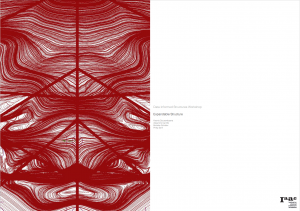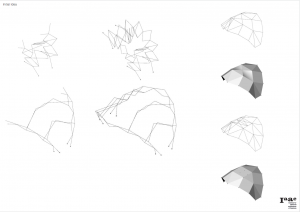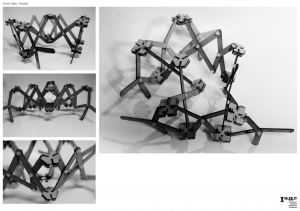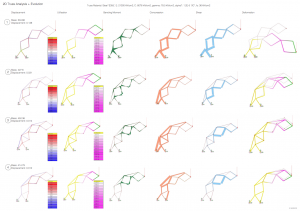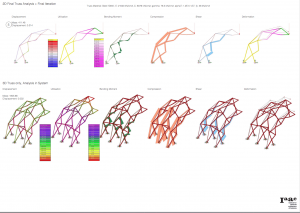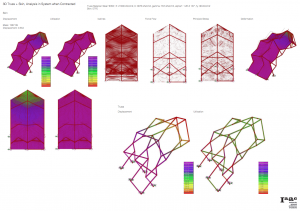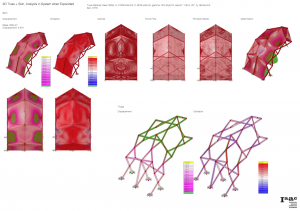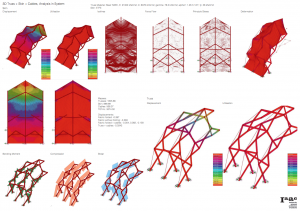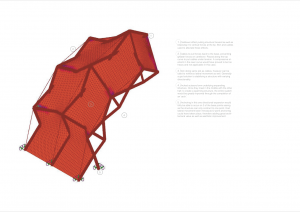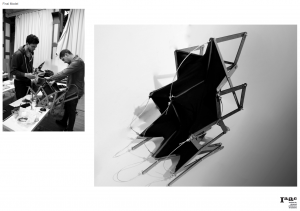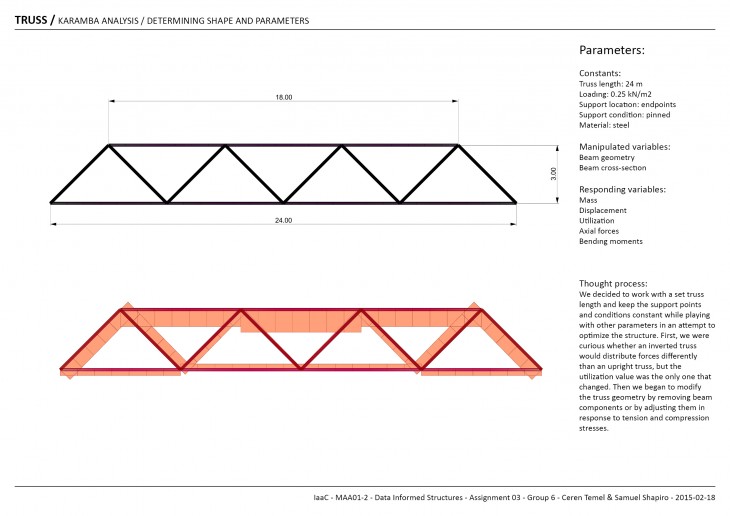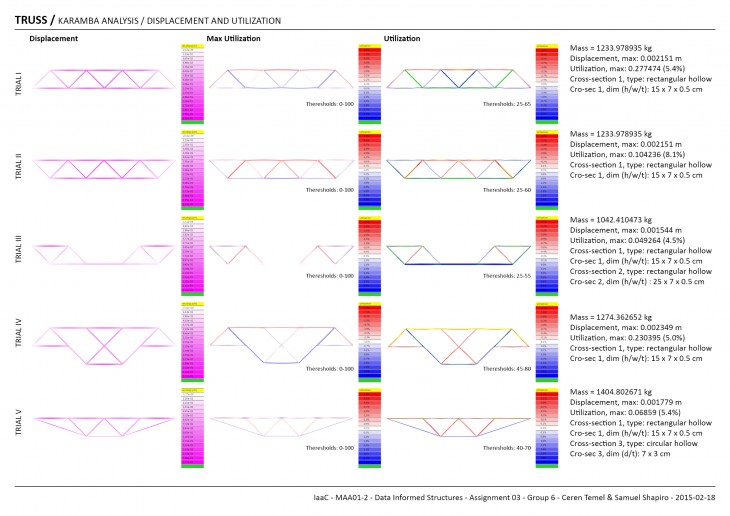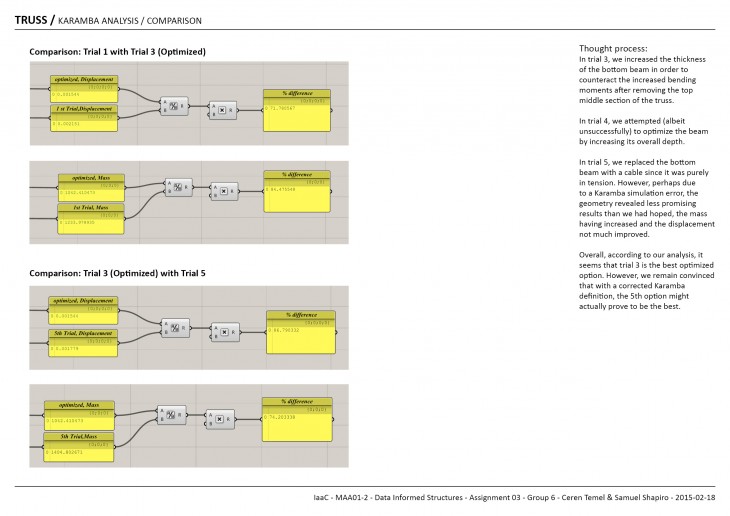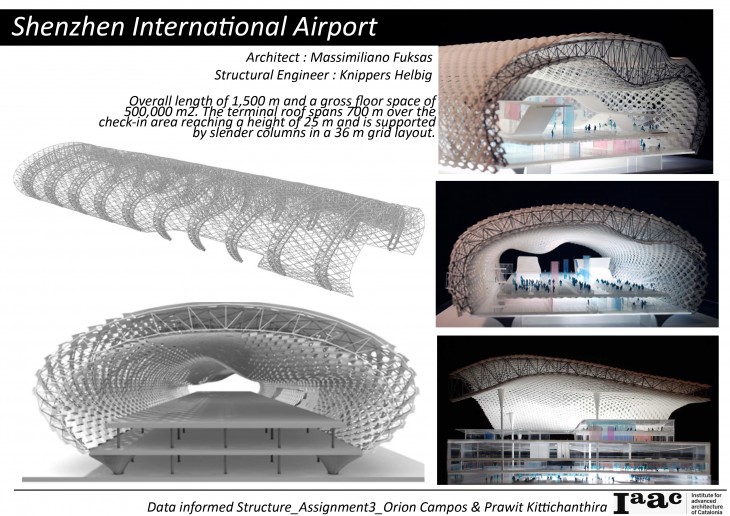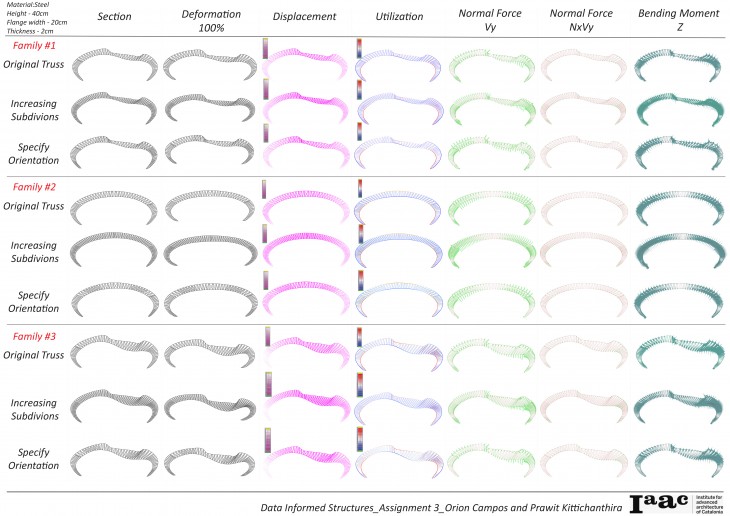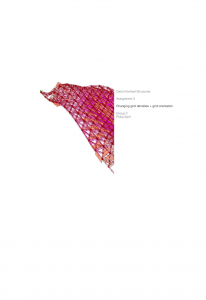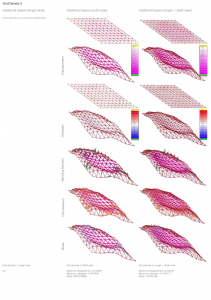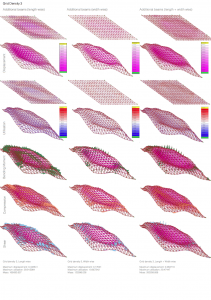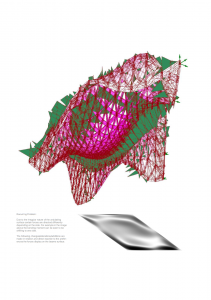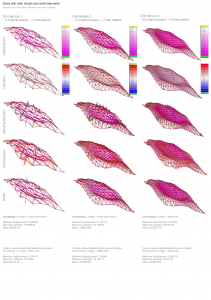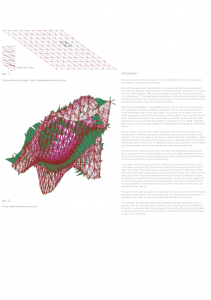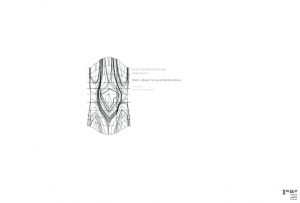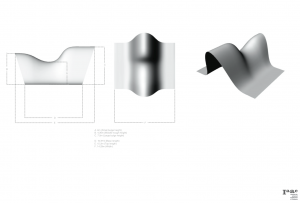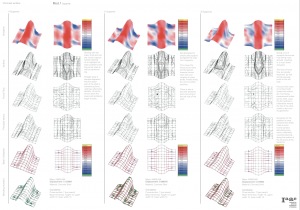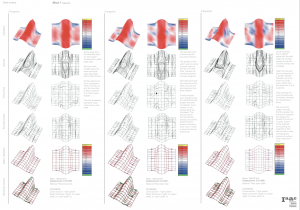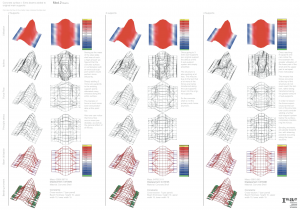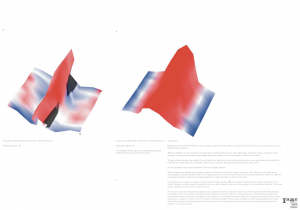Ksenia Dyusembaeva, Borislav Schalev, Alejandro Carrillo, Philip Serif
Proposing a lateral/forward expansion structure. Perhaps reinforced by cables and skin systems.
Initial model showing lateral + forward expansion/contraction.
Analysis to ensure greater rigidity in the cantilever, reducing deformation and stresses in general.
First 3d setup of structural system, exploring effects of forces.
Addition of skin to alleviate excessive forces.
Adding of cables for further increase in rigidity and stability.
To start with the idea was to create and expanding structure that not only expands in forward motion but also laterally, opening up possibilities for a variety of applications (shelter, bridge, temporary structure, pavilion). This structure would have 2 states; open and closed.
We quickly realised that the forces experienced under such a setup can only be understood once one has analysed the single constituents of said structure. So we simplified the initial analysis down to the ’2d’ truss-scissor system to understand the underlying forces that component experiences. This was important to do since the structure is a collection of these 2d elements.
After several analyses the final setup of the 2d truss-scissor was found and we arranged it in a row of 3 of these elements. After extensive study on this now 3d system we were forced to add a skin as well as cables for rigidity purposes, seeing as the structure alone would have been relatively weak, especially when cantilevering in the expanded state.
After ensuring the stability of the cantilever we were going to attempt to create lateral movement as well, however the workshop time expired and we were not able to continue. The problem then would have been to secure the lateral load, leading the forces back to the base.
The next steps would have been to anchor the base points and figure out the lateral movement, which would provide greater coverage/surface area when expanded, and work out a viable method of locking the 2 sides in place once they met at the pinnacle of their individual cantilever effect (creating a spanning structure). Additional, directional specific, cabling would add further rigidity and support for greater lateral expansion. Furthermore a skin may even remove the need of cables if secured in specific spots which would be experiencing the highest concentration forces.
The architectural value/potential of this experiment would have really emerged once the locking of the base and the lateral expansion would have been realised.

